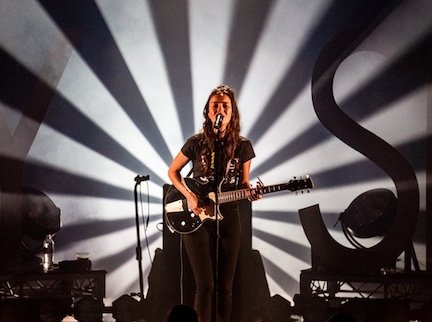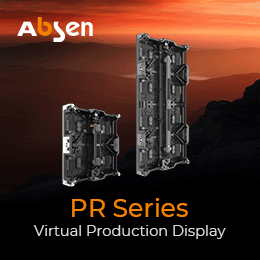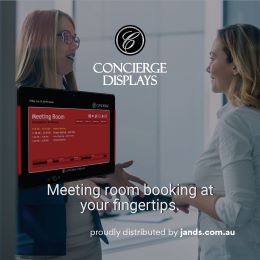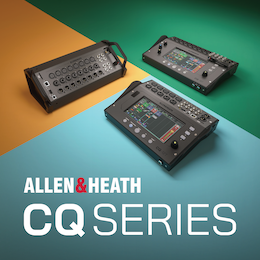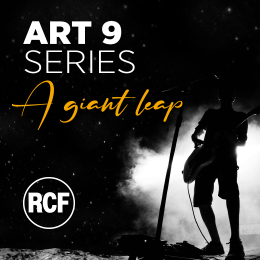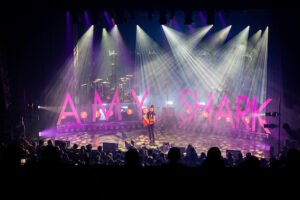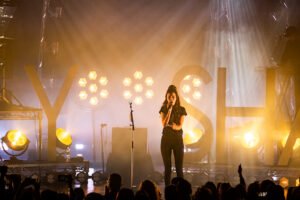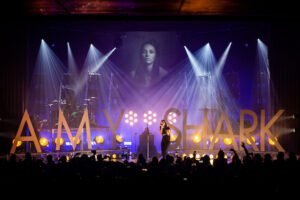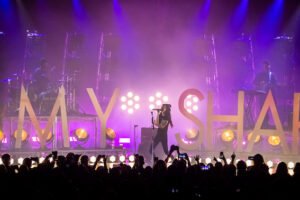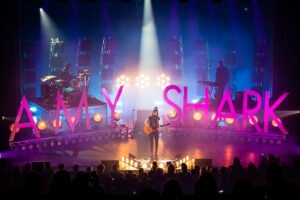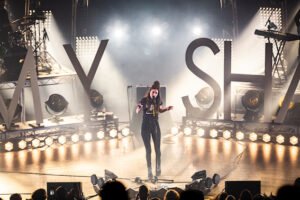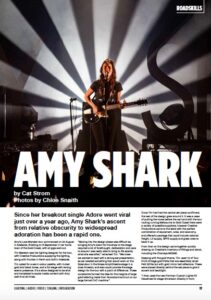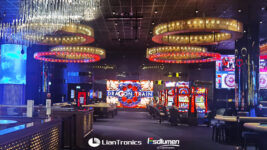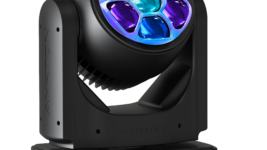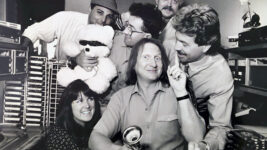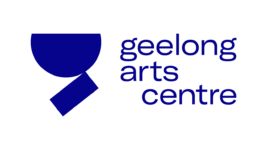Subscribe to CX E-News
ROADSKILLS
Amy Shark
by Cat Strom.
Photos by Chloe Snaith
Since her breakout single Adore went viral just over a year ago, Amy Shark’s ascent from relative obscurity to widespread adoration has been a rapid one.
Amy’s Love Monster tour commenced on 24 August in Adelaide, finishing on 8 September in her home town of the Gold Coast, with all gigs sold out.
Tim Beeston was her lighting designer for the tour, with Creative Productions supplying the lighting, along with Frontier in Perth and AJS in Adelaide. Tim opted for a warm colour palette, with muted gold and black tones, and a full stage with strong scenic presence. It’s a show designed to be shot and translated to social media content with Amy well-lit at all times.
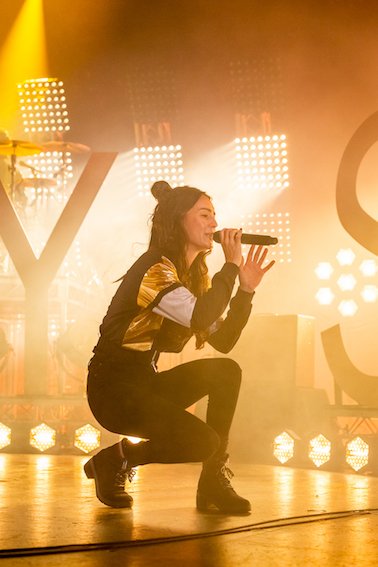 “Moving into the design phase was difficult as bringing Amy’s vision for the show to the stage required a lot of forethought, deliberation and care to ensure I was really able to bring to life exactly what she was after,” remarked Tim.
“Moving into the design phase was difficult as bringing Amy’s vision for the show to the stage required a lot of forethought, deliberation and care to ensure I was really able to bring to life exactly what she was after,” remarked Tim.
“We knew we wanted to lead with a strong set presentation, as we needed something that would work on the Splendour in the Grass Amphitheatre stage in a dusk time-slot, and also could provide the stage design for the tour with a point of difference.
“These constraints formed the idea for the insignia of large gold lettering made from Alucobond and cut on our large format CnC machine.”
Once Tim had had the central set piece confirmed, the rest of the design grew around it. It was a case of putting the horse before the cart and with the tour routing running Melbourne to Gold Coast there were a variety of possible suppliers; however Creative Productions came to the table with the perfect combination of equipment, crew, and economy, and offered a package that could include national freight, LX supply, SPFX supply and great crew to back it up.
From then on the design came together quickly drawing on Creative’s inventory of fittings and stock, including the Chamsys MQ500.
Keeping with the gold theme, Tim used 12 of Tour Pro’s Vintage gold Patts that are essentially small Patt 2013s but with gold mirror ball reflectors. These were placed directly behind the set piece to give it accent and backlight. “I then used the new Portman Custom Lights P2 Hexalines for stage dimension directly in front of the set and to backlight Amy’s performance space nicely,” added Tim.
“I used two Portman P2s wrapped around her centre position to bring character to the generic pit shots most photographers seem to get, to tie the concept together.”
Continuing the theme, Tim placed three P1s upstage of Amy to give her backlight and a point of difference in song stops, rests, and breaks. To complete the floor design, Tim used an array of Chauvet 7x7s supplied by Matt Downs of South West Solutions. These where hung on curved truss in order to get the 3.5 degree fittings to hit just above the downstage edge, backlighting the performance but not constantly blinding the audience.
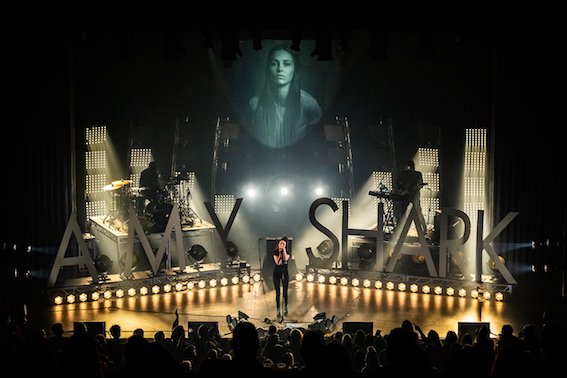
These provided the upstage character and chase effects via the pixel map on the MQ500. “Just upstage of this were the GLP JDC-1s,” continued Tim. “I broke these fixtures down in to three profiles and ran them as a tilt/strobe bar, pixel strobe effects and a colour wash. The latest update on the JDC1 now correctly prioritises this order giving the fixture the ability to be a colour wash with the strobe on top.”
“To keep with the warm gold and black these where the only source of colour in the show and were used in three positions; backdrop, 45 through and blind”.
Finally, the most important floor fitting was an upstage centre Robe BMFL that backlit Amy. Tim used it in open at the start of the set to provide a silhouette, and then with a variety of gobos to frame her when she was playing from centre. The flown rig was minimal consisting of three Robe BMFLs to highlight the drums and bass, plus one for the centre stage position.
“It’s nice to only have three lights to use as it makes them very important, and in points of the show there were effects generated from these three lights alone, something that I don’t think you get when multiple fittings are used just for the sake of it,” added Tim.
Eight GLP GT1s provided the stage with space, character and symmetry from above and framed the curved trusses as well as the set with the beam function. They also provided full gobo wash on the stage with the spot function.
“All in all, a lightweight spot that requires some palette configuration to balance colour and focus palettes, but packs a real arsenal of brightness, beaminess, and gobos,” said Tim. “I also had eight GLP X4s to light the set from the front truss and the artist key light was in 202 to pull her into focus from the warm background.”
Matt Landers was in charge of FOH audio with an audio control system supplied by Eighth Day Sound. For control there was a DiGiCo SD9 running a SD rack on Optocore, with Matt also controlling monitors from FOH. He also tour manages the act so he has his hands full!
Touring an audio control package and system tech Clancy Travers made it all achievable. Matt describes Clancy as a brilliant system tech with an excellent workflow, saying his deployment of the touring rig was clinical every show, allowing time for Matt to cover TM duties when needed.
Having an extra set of ears was invaluable. All bar one show utilised the house PA, most described as adequate by Matt, however he did tour some infills, saying that so many venues have infills that do not cover the front of the stage.
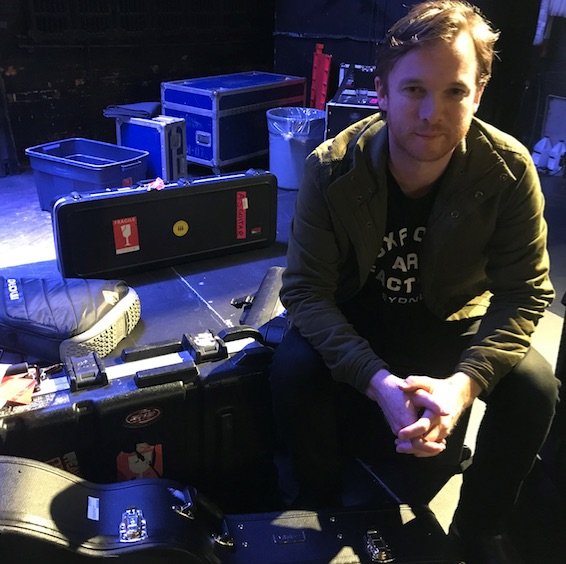
Matt Landers – FOH
“It does annoy me, so wherever I can, I try take some boxes to cover the lipfill so we had some d&b Q7s to roll out,” added Matt. “Even in venues where the infill was OK we’d still put some down the front to help the people who have been lining up for hours to get the full impact of the show.”
Matt remarked that the frame size of the SD9 suits his work flow, and he was also running a Waves MultiRack rig comprising a Waves Extreme Server and laptop control, networked through a Waves I/O card on the console. Console outputs ran into a Lake LM44 which addressed all PA zones and time alignment processing.
“A lot of my effects were running off Waves as well as some channel processing and a little bit of buss processing,” said Matt.
“There is also an analogue API 2500 buss compressor which is over the master buss that was just tickling the threshold VU with about an 8db boost on the Opamp for some API goodness! My plan was to deliver a pop rock show that not only had impact but also kept the song dynamics in tack by not over processing, creating space and depth in the mix.
“A great analogue buss comp like the 2500 can glue the mix and give the sheen that I’m after without going down the plugin hole.”
Effects for Amy are a fairly typical setup for a pop vocal with two reverbs, Short Plate and Long
Hall. For this job Matt has been using the Waves H-Reverb which is quite in-depth and includes emulations of some classic hardware reverb units such as Lexicon 480s and PCM80s, of which he used the good old ‘Concert Hall’ preset.
Matt also had a Waves Doubler for a little bit of a blend and two instances of H-Delay for a Slap and Tap delay. And although it seems like there is a lot going on, it was all mixed with subtlety just to thicken the vocal and give it that powerful pop rock vocal presence and depth.
Drum kit effects are a combination of Non-linear, Room, and Concert Hall reverbs. Matt multi-tracked each show via a DiGiGrid MGB for virtual-soundcheck purposes. This allowed for fine adjustments to the room EQ, effects settings, IEM mixes, and snapshots, to be performed before the band arrive.
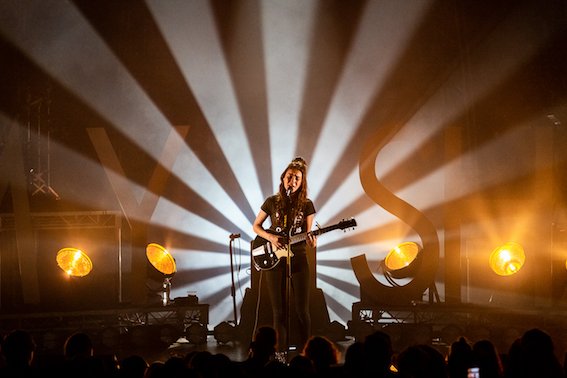 With monitors Matt says that the band basically just want to hear a mix similar to the front of house, so it wasn’t difficult to get everyone comfortable and enjoying themselves. Amy also likes plenty of crowd mics for the sing-along and crowd interaction moments which are assigned to a VCA for control.
With monitors Matt says that the band basically just want to hear a mix similar to the front of house, so it wasn’t difficult to get everyone comfortable and enjoying themselves. Amy also likes plenty of crowd mics for the sing-along and crowd interaction moments which are assigned to a VCA for control.
“I have Snapshots looking after any changes song to song – that’s mainly my FOH effects settings, mutes and some IEM mix levels” he said. “I had a talkback loop setup whereby the band and stage tech talkback mics come back to FOH which I also output to a small shout box next to me.
“I very rarely put in-ears in and listen to what’s happening during the show because obviously I’m mixing FOH, but there is talk back if anyone needs anything during the set. Clancy has an IEM pack as well
so he’s accessible if I should need to make any adjustments. It was actually smooth sailing from show one onwards.”
Amy has a Shure endorsement so there are the usual Shure microphones on the drums including SM57s, Beta 52a & 91a, KSM137 as well as the newer Beta 98AMP on toms which Matt describes as much more robust than the previous model 98a model.
“Amy’s vocal mic is a wireless Shure ULXD4 system with a KSM9 capsule and it’s been incredible for her,” he added. “She has a powerful voice and with this mic instantly her vocal sounds great, providing clarity and depth with very little EQ necessary. Also the hypercardioid pattern helps with stage and PA noise rejection as she wanders the downstage edges or close to the drum kit.
“I use the DPA d:facto on vocals for a couple of other artists, which I really like, but the KSM9 works perfect for Amy. There’s also a KSM32 on her guitar amp.”
For playback there was a JoeCo BBP1-B 24-track playback unit running off a high speed USB flash drive that has all the tracks for the 14 channels of playback. Outputs are D-sub to XLR. The JoeCo is playing those tracks off the USB as opposed to having a laptop running Ableton.
“The JoeCo is extremely solid and very easy to use, much better stability than a laptop setup in my opinion” remarked Matt. “Our keys and bass player looks after the playback rig – he has an iPad with a Bluetooth controller on the JoeCo so he can easily view the set list, and cue the tracks.”
Amy and the techs had Shure PSM1000 IEMs whilst the drummer and keys player were on the Shure P9HW hardwire pack as they are stationary during the show. On stage there was only a drum sub and single wedge for keys/bass.
Article from the November 2018 edition of CX Magazine. CX Magazine is Australia and New Zealand’s only publication dedicated to entertainment technology news and issues – available in print and online. Read all editions for free or search our archive www.cxnetwork.com.au
© CX Media
Subscribe
Published monthly since 1991, our famous AV industry magazine is free for download or pay for print. Subscribers also receive CX News, our free weekly email with the latest industry news and jobs.


